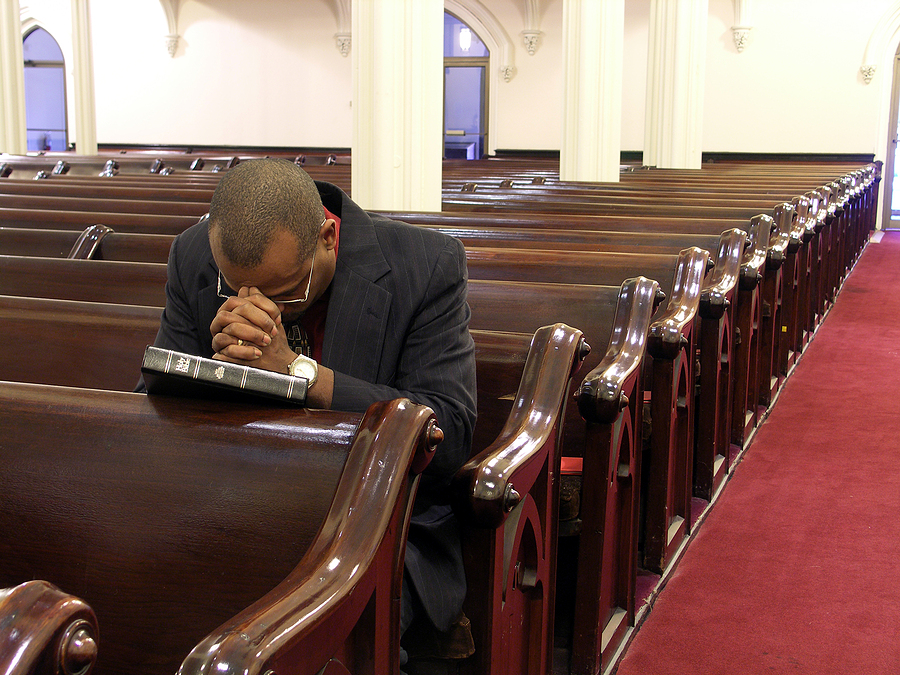
Solving the Dilemma of Clergy Burnout – An Empowered Laity
Clergy are the heartbeat of churches, yet they seem perpetually on the edge of burnout. That sets up a real dilemma. The church depends on them. And yet, maybe depends too much. This is why I’ve been looking at the factors that contribute to clergy burnout. So far, we have looked at two factors: the impact of a fixed mindset and the pace of leadership change within congregations.
But those aren’t the only two factors at play in clergy burnout. Another key factor is the sense that clergy are in it by themselves. That the success of the ministry depends solely or mostly on the clergyperson.
In this article I will explore the dilemma of clergy burnout caused by stress and isolation in the clergy role. And reveal how an empowered laity can bring renewal to both you, as clergy, and the congregation you lead. First, let’s take a closer look at the problem.
Clergy Burnout Dilemma #3
When I pastored churches, I was acutely aware of the tension inherent in my role. Professional boundaries cautioned me against forming deep friendships with members of the congregation. By definition, it was my job to create community to which I would never fully belong. This is a tough spot to be in.
It creates a perpetual sense of not belonging which reinforces the sense of isolation. This feeling of loneliness may lead to pushing harder, overextending yourself, and then deprioritizing self-care. Once self-care is put on the back burner, you’re less likely to take days off and vacations. Let alone renewal leave. Meanwhile, the sense of burnout increases until you’re toast.
It reminds me of the Barna survey which named the top two reasons pastors consider quitting: the immense stress of the job (56%) and feeling lonely and isolated (43%). It doesn’t have to be this way.
Before we get to the solution that an empowered laity provides, let’s look at one dangerous myth that could derail everything: the myth of the solo leader.
The Myth of The Solo Leader
Because of the uniqueness of Jesus, whose leadership we emulate, church leaders fall prey to the myth that they have to do it by themselves. Congregations also fall prey to the myth that only clergy can or should lead. The dynamics of congregational decline reinforce this myth. Perhaps it seems as though there is truly no one to help the leader. Sometimes, clergy simply underestimate the ability of their laity. Or congregations overemphasize the role of clergy. In this way, the congregation inadvertently contributes to clergy burnout dilemma #3: stress and isolation. This dangerous myth of the solo leader kills clergy and congregations. The truth is Jesus was not a solo leader. He had people who forwarded his vision. You have people, too. You just have to look for them.
Empowered Laity Make a Difference
Through Creating a Culture of Renewal® I have witnessed both clergy burnout and laity disempowerment. Ironically, they stem from the same source: the myth of solo leadership. It is laity that showed me the solution.
Jim Granger, a retired military commander, is also a Creating a Culture of Renewal® grad and Certified Renewalist. As a man who has led in a variety of settings, he could see that clergy burnout needed a solution. In the face of proposed consolidation in the Eastern Shore District of the Virginia Annual Conference of the UMC, Jim noted, “Laity is the only source of additional resources. The Lay Servant Ministry committee is the means to bring laity into positions of greater responsibility. The time is now—clergy burnout is a real issue.”
Jim’s vision: Enhance Lay Servant Ministries on the Eastern Shore. This vision involved having one Certified Lay Servant for every 15 members of a congregation as well as 5 Certified Lay Speakers, and 5 Certified Lay Ministers for the District. His vision was met with a very strong reception by the District Superintendent and was at the core of a new district consolidation plan.
Through him, and other dedicated Lay Leaders, I have witnessed the difference an empowered laity can make. It can be easy to expect a clergy member to do it all and forget that congregations are full of people who want to respond to the call of God.
Laity Training
Every denomination has processes to train and empower laity. These roles may be variously called lay ministry, deacons, commissioned lay pastors, or lay servants. Let’s take a closer look at the plan of laity empowerment laid out by the United Methodist Church. The UMC process has four basic levels of training: Lay Leader, Certified Lay Servant, Certified Lay Speaker, Certified Lay Minister.
LAY LEADERS
In the UMC, every congregation, District, and Conference has lay leaders whose role is to partner with the clergy. The The Association of Annual Conference Lay Leaders is a key resource for Lay Leaders. Also, Annual Conferences have Laity Sessions and I have been delighted to speak at a variety of them.
CERTIFIED LAY SERVANT
UMC Certified Lay Servants are empowered laity who serve their local church. They assist the clergy by providing program leadership, training, congregational and community leadership, and conducting worship. By becoming teachers of Scripture and doctrine, Certified Lay Servants help build community and connection within a church.
CERTIFIED LAY SPEAKER
In the UMC, a Certified Lay Servant can receive additional training to become a Certified Lay Speaker. These laypersons partner with clergy and the ministry team to serve by preaching. Their role is to fulfill the need for a pulpit supply.
Perhaps the clergy member has a child who is participating in a weekend sporting event across the state. With a certified lay speaker, they no longer need to decide between their family and their work. A Certified Lay Speaker allows the clergyperson to take days off, vacations, or renewal leave.
CERTIFIED LAY MINISTER
A UMC Certified Lay Minister is an appointed role that becomes a vital part of a ministry team. A Certified Lay Minister assists the clergy to provide worship services and congregational care. They help build the church’s vision by developing faith communities and establishing outreach ministry in the community. A certified lay minister may also be responsible for church planting, children’s worship, parish nursing, and more.
When a church discovers its big vision, a certified lay minister exists to help the clergy make this a reality. Being trained to establish and cultivate the vision allows a certified lay minister to engage with the community.
Say Yes to Laity
There’s one kicker here. In order for an Empowered Laity to be effective and to alleviate clergy burnout, clergy have to say yes to laity! You have to allow yourself to be assisted and supported. This can be hard to do.
Join me to learn more about how clergy and laity can empower each other in one of my free 90-minute online seminars “How Christian Ministries are Achieving Success”. Make this the year you say yes to renewal and embark on a journey that leaves burnout behind!
Copyright © 2024 rebekahsimonpeter.com. All Rights Reserved.









